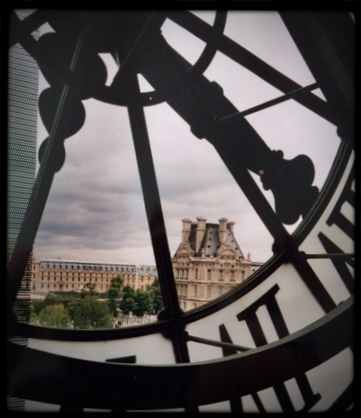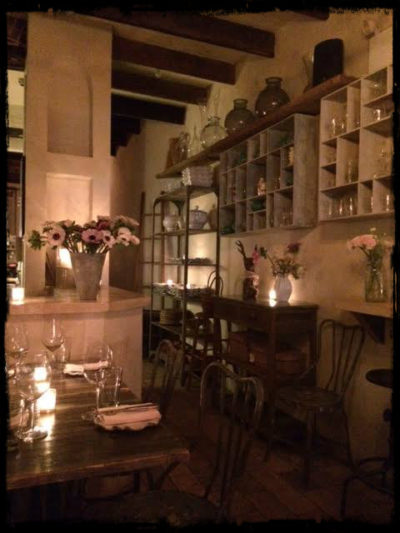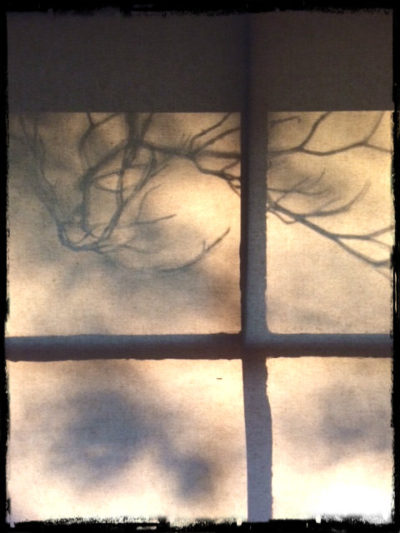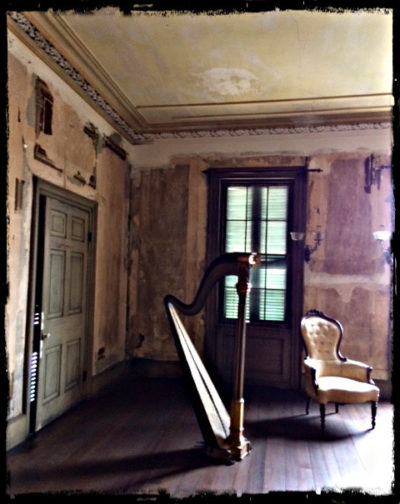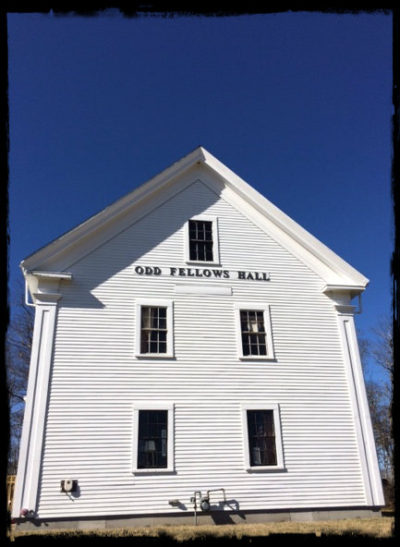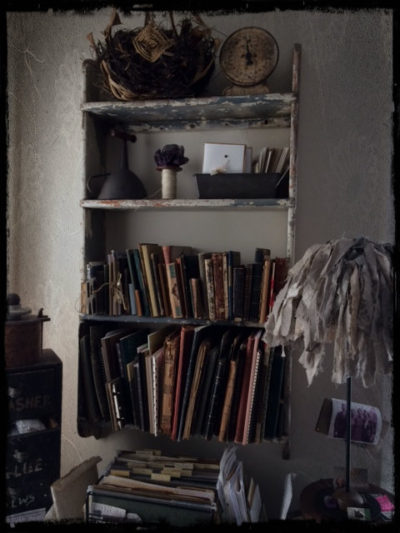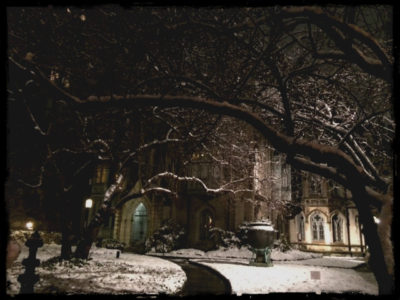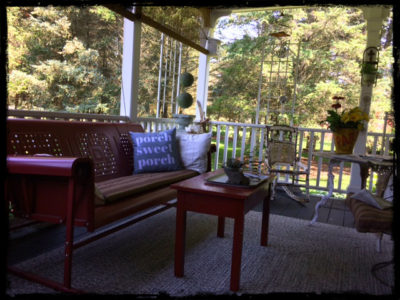
Porch Sweet Porch
It is summer in earnest. Past solstice, morning light still filters through the curtains at five, and afternoons linger before folding into evening. I find myself moving slower too; effort is an atonal note in a long stretch of leisurely melody.
Summer seems the season closest to childhood and its rhythms, following the light wherever it took us: to the shade beneath a maple tree, to hot gravel roads under our bike tires, to the stony shores of a sparkling lake, to twilight back yards and games of hide & seek with fireflies caught in our hair.
In July or August, I am fortunate to find my way home to home, the little town in western New York where memories surface like fish in a pond. I am also fortunate to have three splendid sisters, one of whom is the creator of this porch. Aside from the fact that she can see the quirky comeliness in all sorts of rag-tag things, she is an artist with an eye for placement, contrast, juxtaposition. To sit on one of her porches (she has two, plus a patio) is to know the true sweetness and comfort of summer and home.
In early morning when the air is fragrant with grass and the warblers are fluttering by, we sit on the porch and hold big cups of strong creamy coffee and talk about our plans for the day, our dreams for our lives. We process, dissemble, reassemble, compare and contrast, examine and put away. Our talk is a comfort and an essential balm, settling each of us in the moment. And all the while, morning circles round the porch, and the sun warms our bare arms and toes.
This July, that sun was bold and merciless, bending the fragile dill in half, shriveling the basil, baking the roses. Memories surfaced again: the waves of relentless heat that rose from the corn and wheat fields like an oven door left open by mistake; the humidity that stuck to the skin, a thin layer of glue; the still, breathless nights when we slept at the foot of our twin beds near the single window and woke confused, bewildered by tangled dreams.
The beautiful rooms of my sister and brother-in-law’s house are cooled by air conditioning, but the porch stays connected to summer and its moods. It seems to me that all houses should have porches open to street, sidewalk, road, and weather. The porch keeps us aware of the billowing clouds threatening rain, aware of the lighting up and cooling down of the day, aware of each other. I have a friend who recently moved to a smaller home that has no front porch, only a small back patio. She says it’s hard to meet people when your orientation doesn’t include them.
Porches, with their eye to all the goings-on, can be quiet or convivial, screened or unscreened, grand or minuscule. To lean back in an old rocking chair and look out at summer in bloom, to smell the rain and the grateful earth, to hear the roses sigh at twilight, the jubilant cries of children on bikes is to have the best seat in the house.



